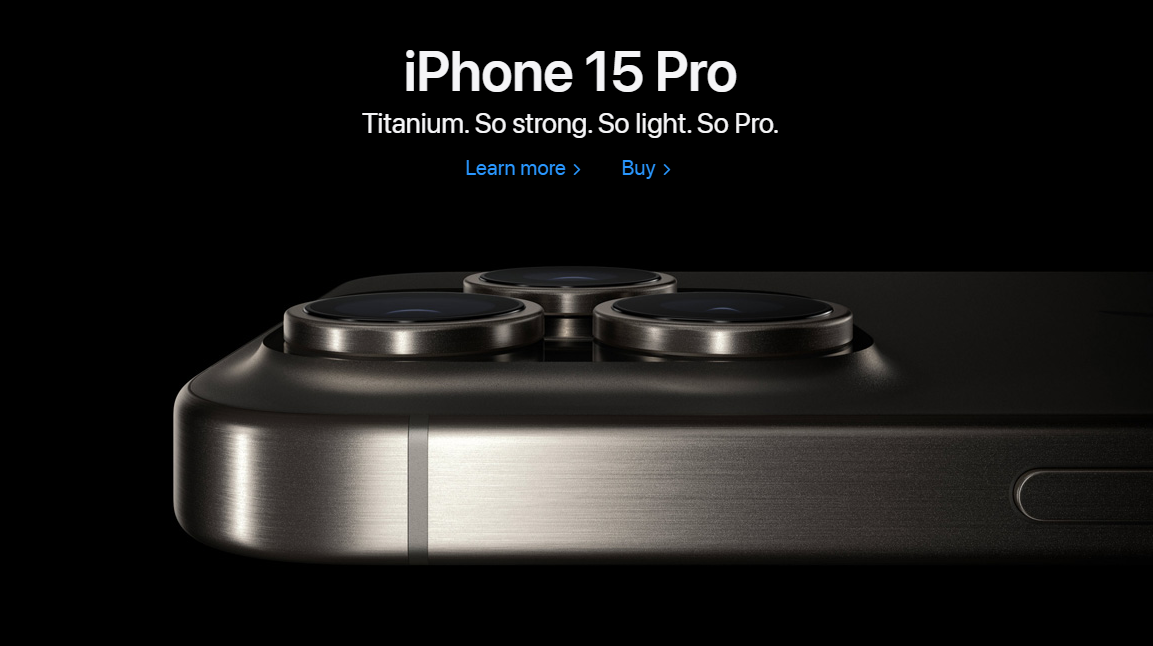
Hey, did you know the new Titanium iPhone 15 is out now? Do you want to know how I know?
Because it’s literally advertised on every major platform I’ve used in the last week.
- Streaming services? ✅
- Social media? ✅
- Sports channels? ✅
- Twitch/Youtube? ✅
- Random billboard? ✅
This awareness campaign is absolutely insane. But you know what’s crazier? Half of the commercials and advertisements aren’t even from Apple. Other companies like T-Mobile and Verizon are advertising the phone with their own deals too!
It seems like the entire world (online and offline) is just canvased with these ads. And from a digital standpoint, their targeting really just seems to be aimed at putting it in front of as many people as possible.
What is Apple doing?
I’m not even an Apple user, and I’m definitely not their ideal audience. I haven’t shown any kind of intent, search history, or buyer activity that might even suggest I’d ever want to buy an Apple product. But I’m still receiving ads regardless of the platform I’m on.
So this made me think, why spend money selling to people who won’t ever buy?
- Is it because of poor targeting? Probably not. Apple runs some of the most successful campaigns in the history of marketing.
- Do they just have so much money to blow that they don’t care? Doubtful. Apple has always been meticulous about every detail. From product development to sale.
- Are they so big that they don’t care about the small details? At this point, a company the size of Apple has access to an unlimited amount of data. And they are definitely incorporating countless tools to integrate and utilize that information(back to the previous point).
- Is it just a massive awareness campaign? This is the most probable one in my opinion.
Awareness campaigns can drive incredible growth and sales for certain companies. It’s the reason why Coca-Cola spends an average of $4 billion on ads every year. Who doesn’t know about Coca-Cola? Probably very few people, but those people need a reminder. And what better way than a well-timed advertisement?
It’s the same thing with Apple. Massive awareness campaigns put a product in front of as many eyeballs as possible. That way, you can’t help but think about it, talk about it, or create a blog post ranting about it…
Marketing is a lot like fishing
But are awareness campaigns for every business? Not really. The reality is that most businesses don’t need billions of eyeballs talking about their product. In fact, that would just be a waste of marketing dollars.
One of the biggest mistakes a company can make is trying to capture everyone’s attention. Let me explain:
Think of your marketing campaign as a fishing net. You could have a massive fishing net that you throw into the water. If the net is big enough, you’re bound to catch something, and you’ll end up with an assortment of different fish.
But how many of those fish will you have to throw back? Some of those fish aren’t edible, some are too small, and others can be dangerous. So, if you caught 10 fish, you probably ended up with only 1 or 2 that you actually wanted.
Now you get to do it all over again. The thing is, throwing such a big, heavy net is exhausting. Especially if you aren’t getting the results you actually want.
Marketing the smarter way
Here’s how some of the best marketers do it:
- Do your research first. Find out who your audience is, what their pain points are, and why they would want to use your product. (The fish you’re trying to catch).
- Research should give you an idea of where to find your audience/customers. This information will allow you to specifically target them and find them much easier. (Going to a specific fishing spot where you know your fish are).
- Start out by testing different ads, posts, and/or content. Create a few variations of text, images, etc so you can get a feel for what people like. Use a controlled budget to test these different campaigns out, and gather data to see what converts best. (Throwing a smaller net and seeing what is caught).
- Choose the biggest winners and begin scaling them up by increasing their reach.
This works for paid ads, social media content, articles, short and long-form videos, and virtually any other piece of online content.
The key lesson is to start small, test out different variations, and then double down once you get a good response. And like anything in marketing, keep finetuning and reiterating. Don’t stop analyzing or adjusting your content because you hit a winner. There is always something to improve, so keep testing things out and trying to find the next winner because it might just be the one to 10X your business.